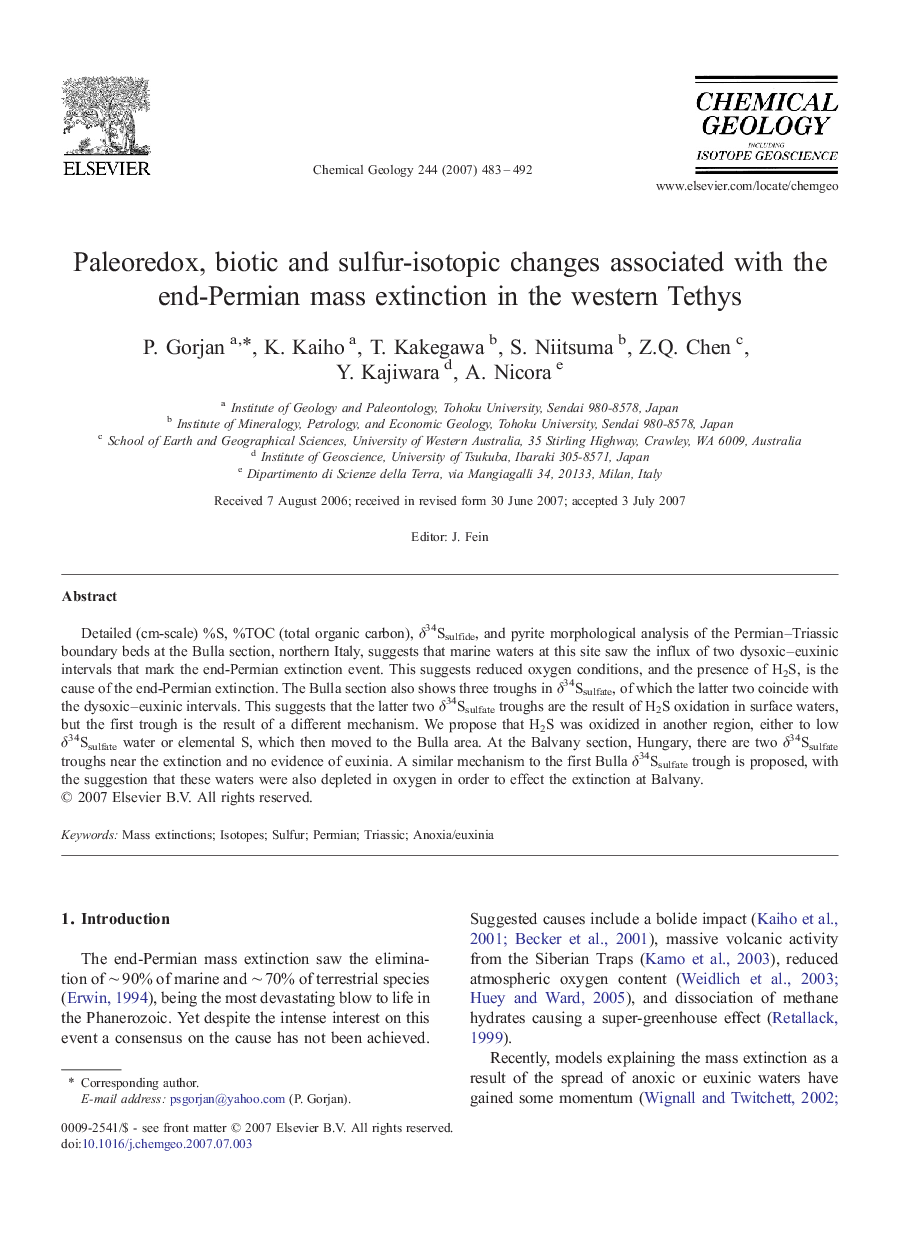| کد مقاله | کد نشریه | سال انتشار | مقاله انگلیسی | نسخه تمام متن |
|---|---|---|---|---|
| 4700903 | 1637741 | 2007 | 10 صفحه PDF | دانلود رایگان |

Detailed (cm-scale) %S, %TOC (total organic carbon), δ34Ssulfide, and pyrite morphological analysis of the Permian–Triassic boundary beds at the Bulla section, northern Italy, suggests that marine waters at this site saw the influx of two dysoxic–euxinic intervals that mark the end-Permian extinction event. This suggests reduced oxygen conditions, and the presence of H2S, is the cause of the end-Permian extinction. The Bulla section also shows three troughs in δ34Ssulfate, of which the latter two coincide with the dysoxic–euxinic intervals. This suggests that the latter two δ34Ssulfate troughs are the result of H2S oxidation in surface waters, but the first trough is the result of a different mechanism. We propose that H2S was oxidized in another region, either to low δ34Ssulfate water or elemental S, which then moved to the Bulla area. At the Balvany section, Hungary, there are two δ34Ssulfate troughs near the extinction and no evidence of euxinia. A similar mechanism to the first Bulla δ34Ssulfate trough is proposed, with the suggestion that these waters were also depleted in oxygen in order to effect the extinction at Balvany.
Journal: Chemical Geology - Volume 244, Issues 3–4, 15 October 2007, Pages 483–492